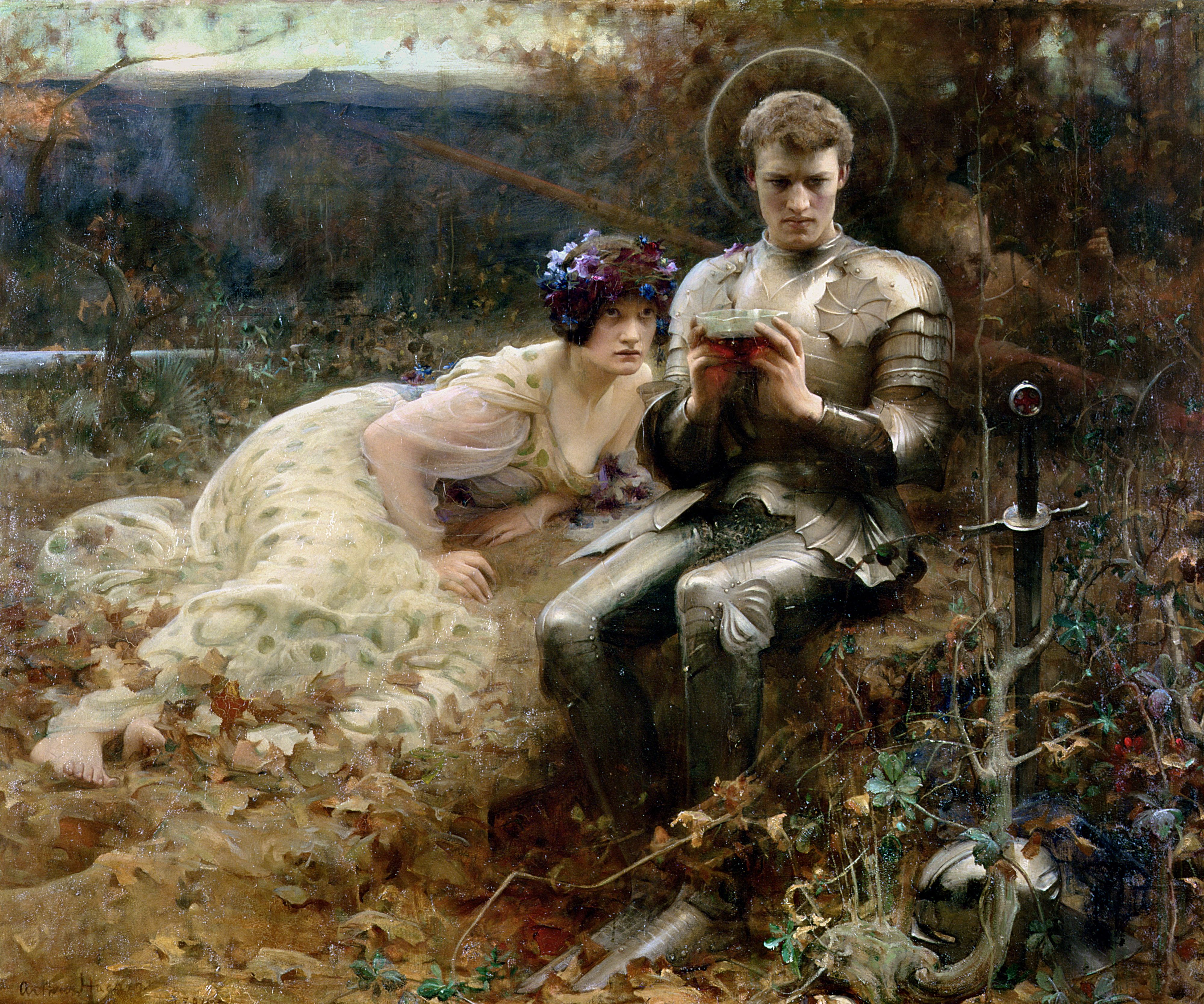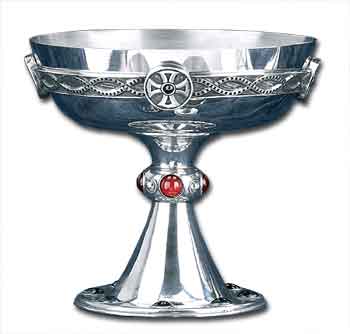
Considering the questions that arise from reading again Malory’s “Le Morte D’Arthur”; what is the Grail? What does it represent? And what is the quest for the Grail? And why cannot Lancelot succeed at the Quest? Surely the pursuit is not simply for a drinking cup, which is what the literal level would have us think; nor is it even a quest for the cup of the Last Supper, which is itself a metaphor. On that literal level the cup has associations with salvation and with the crucifixion/resurrection and with the Incarnation himself.
But why a drinking cup? Drinking, like eating, is central to human life and the preservation of human life but is also symbolic of taking into ourselves ideas and ways of thinking. Thus Adam and Eve when they transgress the law do so through eating of a fruit. Thus also Yahweh institutes a Passover Feast marking the freedom from bondage in Egypt. Thus also Christ institutes the Last Supper/Eucharistic Feast. So the Grail has something to do with taking into ourselves some nourishment spiritually, intellectually, emotionally.
 Most commentators associate the Grail with Jesus and the finding of the Grail as seeing God in the beatific vision. It is a “vision of heaven”. But this raises problems in the Malory story wherein first the Grail is associated with Christ and the theophanic imagery that is pertinent to him, but also is associated with women who always seem to accompany the Grail to some degree. Second, though the finding of the Grail is accomplished by Galahad, Malory’s story neither makes him the most intriguing character nor does the story end with Galahad’s ascension into heaven. Instead, Malory’s story continues with the civil war, the loss of Camelot and death of Arthur, and the misfortunes of Arthur’s greatest knight, Lancelot. Consequently there seems to be more to the story of the Grail then merely seeing heaven.
Most commentators associate the Grail with Jesus and the finding of the Grail as seeing God in the beatific vision. It is a “vision of heaven”. But this raises problems in the Malory story wherein first the Grail is associated with Christ and the theophanic imagery that is pertinent to him, but also is associated with women who always seem to accompany the Grail to some degree. Second, though the finding of the Grail is accomplished by Galahad, Malory’s story neither makes him the most intriguing character nor does the story end with Galahad’s ascension into heaven. Instead, Malory’s story continues with the civil war, the loss of Camelot and death of Arthur, and the misfortunes of Arthur’s greatest knight, Lancelot. Consequently there seems to be more to the story of the Grail then merely seeing heaven. Technically the Grail image, or Graal, was originally a dish or mixing bowl and comes from Celtic mythology where it was a cauldron owned by the Sea Lord, Mannannan son of Llyrr. This cauldron, overflowing with wine and food, was kept in the Domnu, the deep sea or abyss, in the land of the Fomorians, the giants under the sea and was a cup of rebirth, renewal and inspiration. Three drops from this cup transformed Gwion Bach into Taliessin, the great poet of Gaelic mythology. The Graal stands as a metaphor, then, for that source in the subconscious amidst the giants of nightmare and dreams which pours forth the inexhaustible images, ideas, and forms that inform the waking world. Finding the Grail is finding the source of these dreams.
Furthermore, the cup is a drinking cup from which pours forth water and wine (just as water and wine issued forth from the side of Christ on the Cross). This birth image consists of a mixture of two complementary elements. Water represents purity and whiteness, the ocean, the feminine powers of the subconscious and the body itself. Wine represents fire and heat, blood, and the sun. It is associated with the color red (and one recalls here the image in Malory of the red and white dragons that contend with each other over the land of Vortigern). Wine also represents the conscious realm of the mind. But the mixture of the two is what is important within the cauldron of the Grail.
Man consists of a metaphysical, immortal, divine element (the mind) and a physical, mortal, human element (the body). Most people consider that the metaphysical is superior, good, pure, and needs to be pursued while the physical body is thought of as bad, corrupt, inferior and needs to be punished or completely abandoned. The Cathars went so far as to help others release from this mortal coil by galloping about Southern France killing them. Even today, heretical sects in certain religions consider this world to be illusion and the greater glory to be in the next world; and they are willing to bet their body and the bodies of others against the promise of 72 virgins (or grapes).

There are also some people who completely deny the metaphysical realm and claim that all we have is the physical world of the body. Pleasure, indulgence, and power are the only claims to greatness one can make with such a vision.
But this schizophrenic way of looking at our existence is a warped vision. What the Grail image seems to suggest is that the good lies not in the next life but in this one; in a union or marriage between the metaphysical and physical worlds. In this sense the marriage to a good woman is the Grail. In this sense seeing heaven as the acquisition of a sense of balance or perfection is the Grail. In this sense Mary (or Elaine for Lancelot) is the Grail. The Grail, the sense of balance between these two halves of the red dragon and the white dragon is itself that peace with passeth (or is greater than) understanding which when made permanent we call secure, or salvation. It is a state of consciousness operating out of complete harmony within oneself and out of which one perceives the unity of all things.
Our hearts were made for this God and they are restless until they find their rest in Him.
The Grail represents the acquisition of harmonious balance with ourselves, the source of our being, out of which is born (with blood and water) the Church of ideas, images, actions, words, and love.


No comments:
Post a Comment